Acer Spin 7 review
Acer’s razor-thin convertible takes on the Surface Pro 4
While there’s a lot to like about this device, it’s also dogged with compromise. It’s hampered by poor performance, a high price tag, and questionable design choices - an unfortunate combination that means you’re better off looking elsewhere.
-
+
Incredibly slim; Attractive design; Nice keyboard and trackpad;
-
-
High price; Lacklustre performance; Poor quality hinge; No keyboard backlighting;

Acer has been attempting to raise its profile as a maker of prosumer and business-grade hardware in recent years, with a series of notebooks aiming to take on higher-priced devices like the MacBook and XPS ranges.
After reviewing Acer's surprisingly good Swift 3 notebook, we were expecting big things from the company's latest 2-in-1. The flagship of its convertible line, the Acer Spin 7 aims to cement Acer's position as a contender in the realms of high-end hybrids - but can it match its established rivals?
Design
We were immediately taken with the Spin 7's design. With the lid closed, the all-metal chassis is only 11mm thick, and the clean lines and understated, minimalist aesthetic go together to create a striking-looking device. Sadly, our positive feelings quickly began to fade away once we actually started using it.
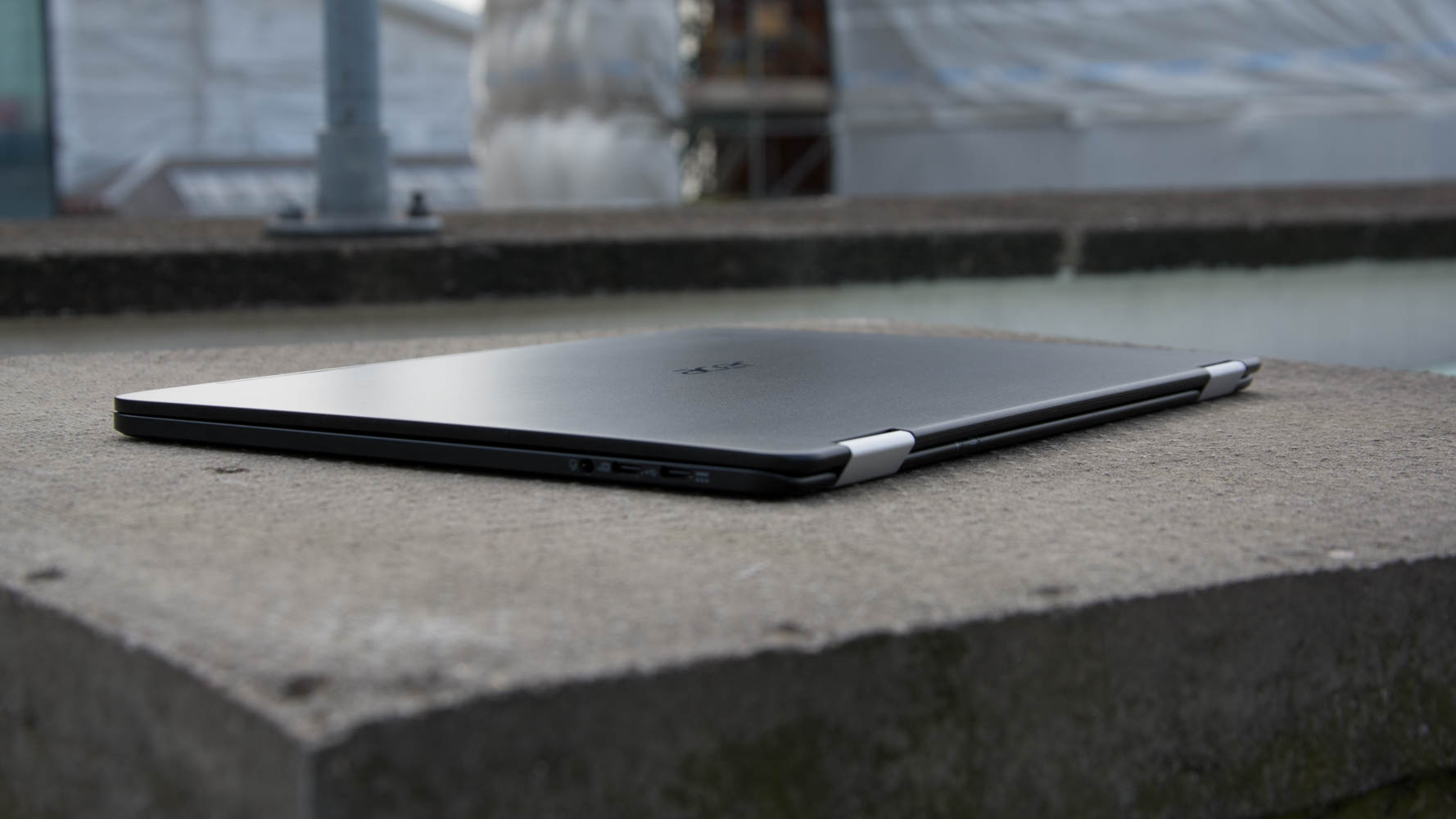
The 360-degree hinge is the first flaw - it's simply not stiff enough to hold the display firmly in place. Flip the Spin 7 over into tent mode, and it feels like it's in constant danger of falling over. Worse still, it even wobbles slightly back and forth when you're typing in laptop mode. Attempt to carry the Spin 7 across the room with the display upright, and it barely makes a few steps before sagging downwards and pointing towards the floor.
At 1.2kg, it's among the lightest 14in notebooks we've seen. This feat is even more impressive when you consider that it's a touchscreen model too, as this generally adds a couple hundred grams to the weight. However, while it is undeniably light for a 14in laptop, the Spin 7 is too heavy to comfortably use as a handheld tablet - like many convertible 2-in-1s, it's a much better laptop than it is a tablet.
Keyboard and trackpad
It's tough not to like the Spin just a little, though. The gorgeous looks get it off to a good start, and it's all the better for marrying that handsome figure with a rather nice keyboard and trackpad. Despite the thin base, the chiclet keys have just enough travel and responsiveness to feel good under the finger, and the ultra-wide trackpad is great - multi-touch gestures such as swiping between open programs are an absolute breeze.
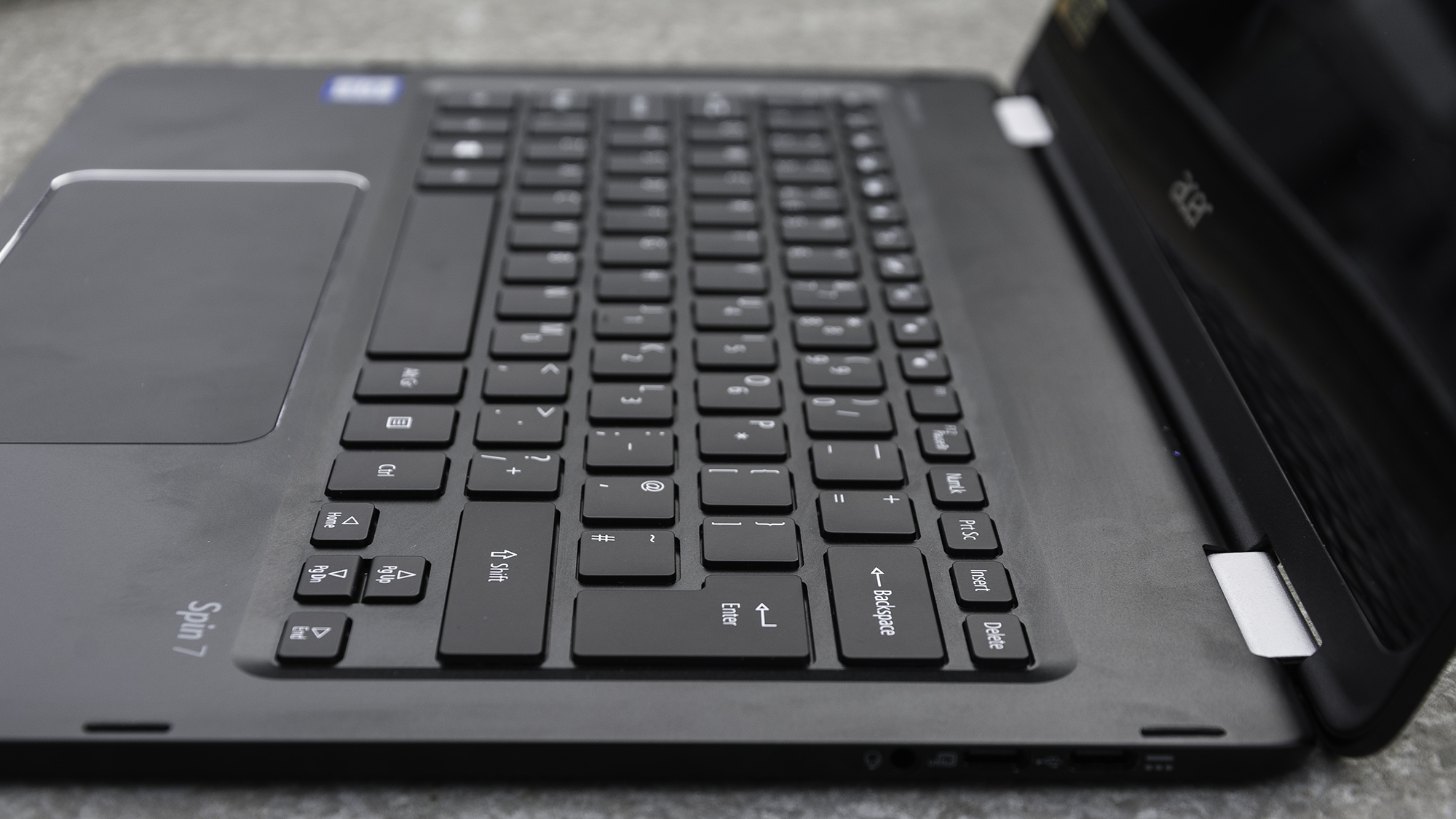
However, the Spin 7 does lose points for having no keyboard backlighting. This should be an essential feature by now and the fact that Acer has neglected to include it feels like a missed opportunity, especially for this kind of money.
Performance and hardware
Sadly, Acer hasn't outdone itself in the hardware stakes. On paper, it sounds like it should be a potent performer: in addition to 8GB of DDR3 RAM, a shiny sticker on the chassis proudly proclaimed that it's fitted with a seventh-generation Core i7 processor. However, a surprisingly lacklustre showing in our benchmark tests prompted us to take another look.
While it acquitted itself capably in our image editing benchmarks, it seriously underperformed in the video editing and multitasking tests, scoring much lower than we'd expect from a 5th-generation i7 processor, much less one of Intel's latest models.
On closer inspection, however, we discovered that the Spin 7 uses one of Intel's Y-series Kaby Lake chips. In other words, it's a rebranded Core m7 processor, which explains its rather unimpressive results in the more demanding portions of our benchmarks.
With this in mind, the Spin 7's results actually look very respectable; it offered performance roughly on par with what we'd expect from what's effectively a Core m7 chip, and it even outperformed Apple's 12in MacBook.
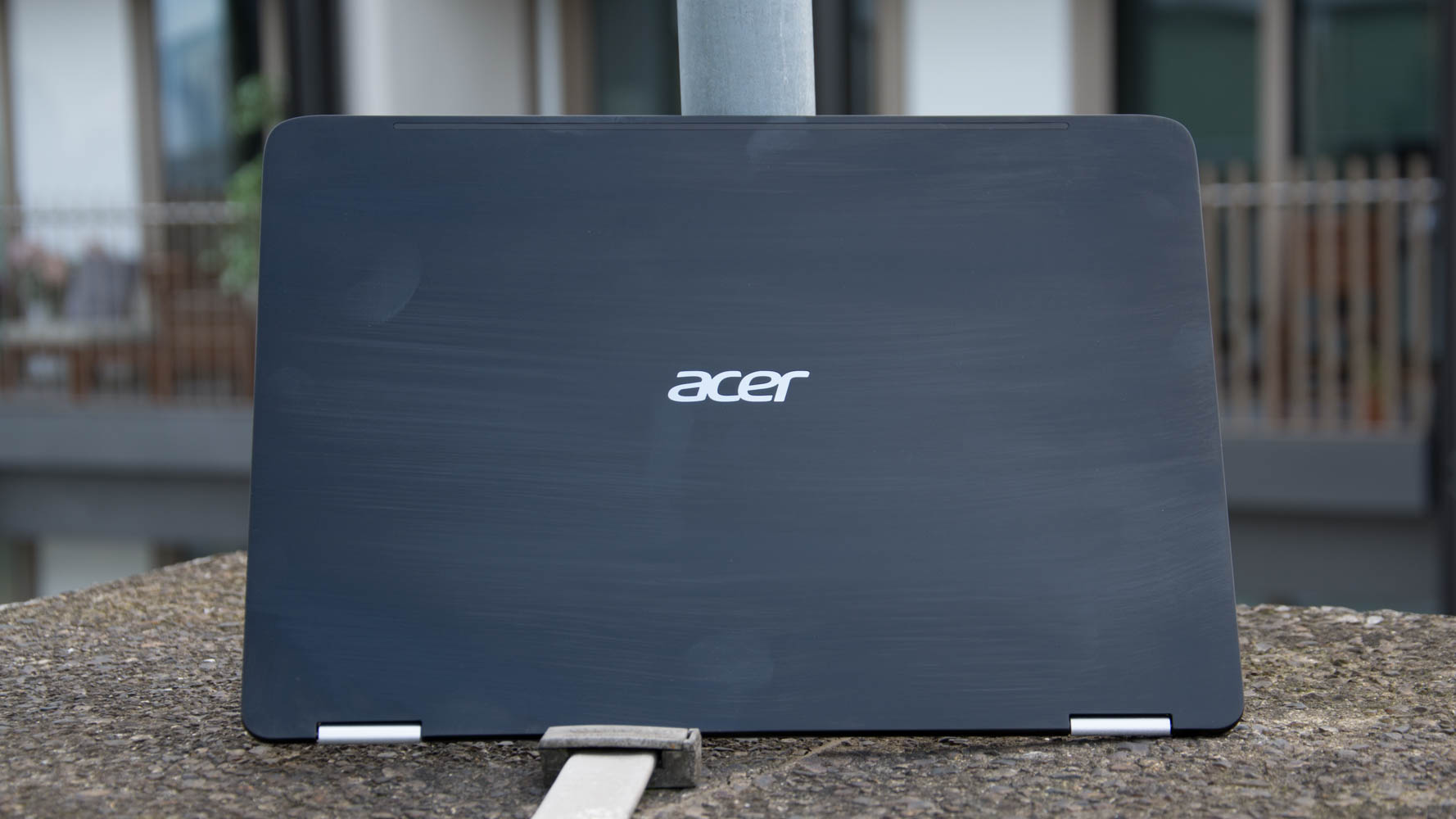
It's worth bearing in mind, though, that it's still roundly trounced by any of Intel's full-fat processors. Kaby Lake's low TDP talents have allowed Acer to pare the Spin 7 down to a sliver, but the trade-off is performance. If processing power is what you're after, you'll get better performance at a cheaper price from one of last year's Core i5 Skylake notebooks.
Indeed, one of the keys to the Spin 7's slenderness is that it's forgone fans completely. The silence is welcome, but despite the power-efficient Kaby Lake processor, the chassis does tend to heat up noticeably even under light use. Push it harder with heavyweight applications, and it gets uncomfortably hot. According to our measurements, the temperature of the area just above the keyboard hit almost 50 degrees, even with a relatively minor load on the processor.
As you'd expect with a chassis this pared-down, there's hardly any room for ports on the Spin 7. You're left with just two USB Type-C slots, which is an acceptable number, although more would be welcome - especially given that you'll need to use one when charging the unit.
Display and battery life
Things start to look up when we get to the 14in Full HD display, which is really rather good. As it covers 95.3% of the sRGB colour spectrum, colours are vibrant and natural, and the maximum brightness of 321cd/m2 means that legibility shouldn't be a problem even on sunny days. Contrast is great too, which helps to eke out plenty of detail from the darkest shadows to the brightest highlights. The glossy screen finish does mean that glare could prove an issue under harsh fluorescent lighting, though.
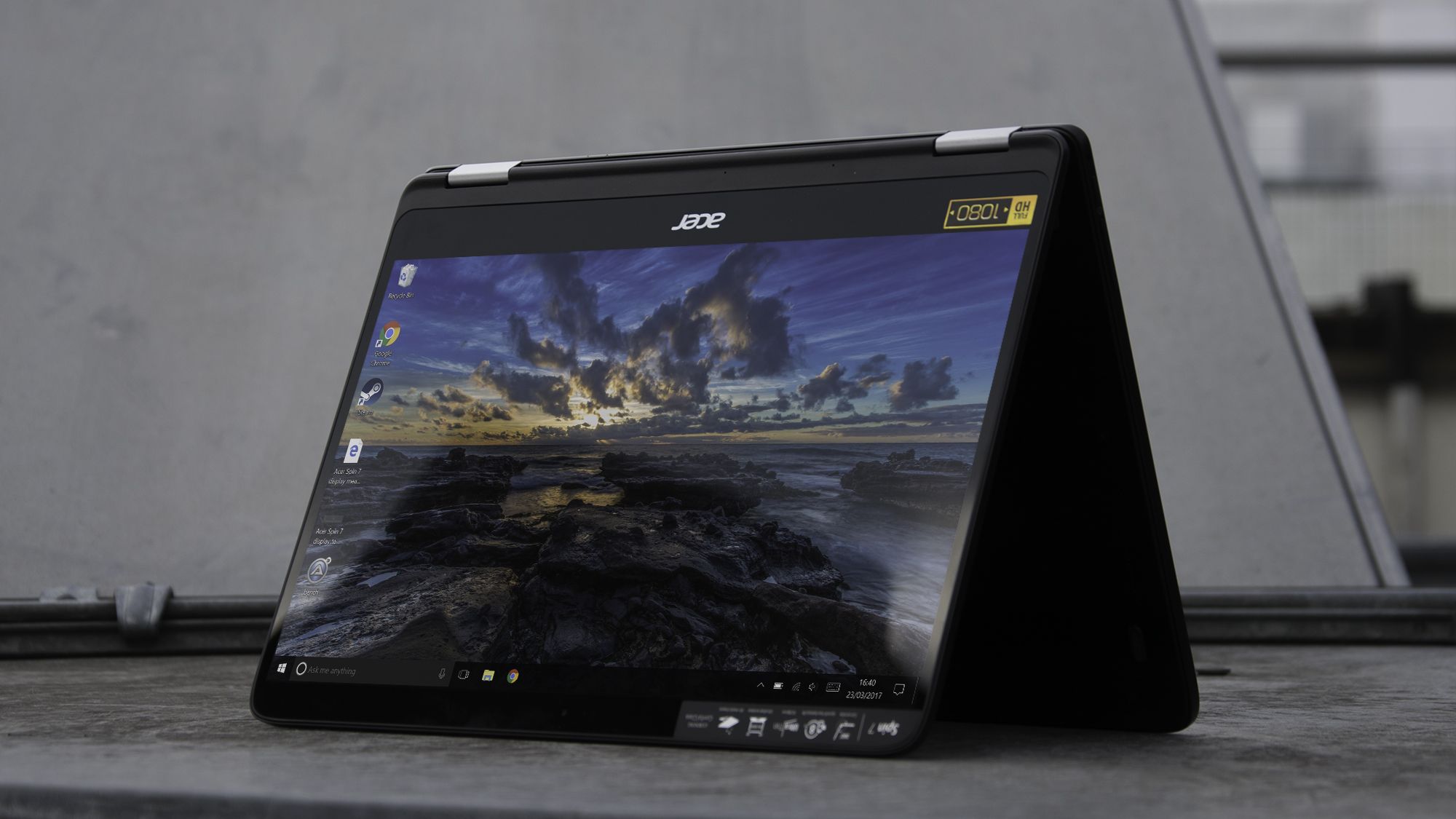
The decision to stick with a 1080p panel over a more impressive QHD or 4K resolution helps to extend the battery life, and it's clearly a necessary compromise. Although the Spin 7's score of 6hrs 57mins in our battery tests is firmly respectable for a notebook this thin, a higher resolution would unquestionably have shaved this down by at least a couple of hours.
If an ultra high-definition display is a sticking point, however, higher resolution displays can be found in rival machines at the expense of processing power and touchscreen functionality.
Verdict
The Acer Spin 7 gets an awful lot right; it's lovely to look at, the trackpad is a joy to use, and it's one of the thinnest convertibles we've ever seen. However, it's a machine that is built on compromise, which ultimately proves to be its downfall.
Issues with build quality - such as the lack of keyboard backlighting and the disastrous hinge - make it feel cheap. At the same time, its 1,200 price tag puts it in the same ballpark as the 12in MacBook and the Surface Pro 4, both of which are much more refined machines.
The Spin 7 is too flawed to be a credible convertible, and too underpowered to rival the best ultrabooks. Whether you're hunting for a lightweight 2-in-1 or a business-grade laptop, there are several better-performing and more cost-effective alternatives which we'd buy instead.
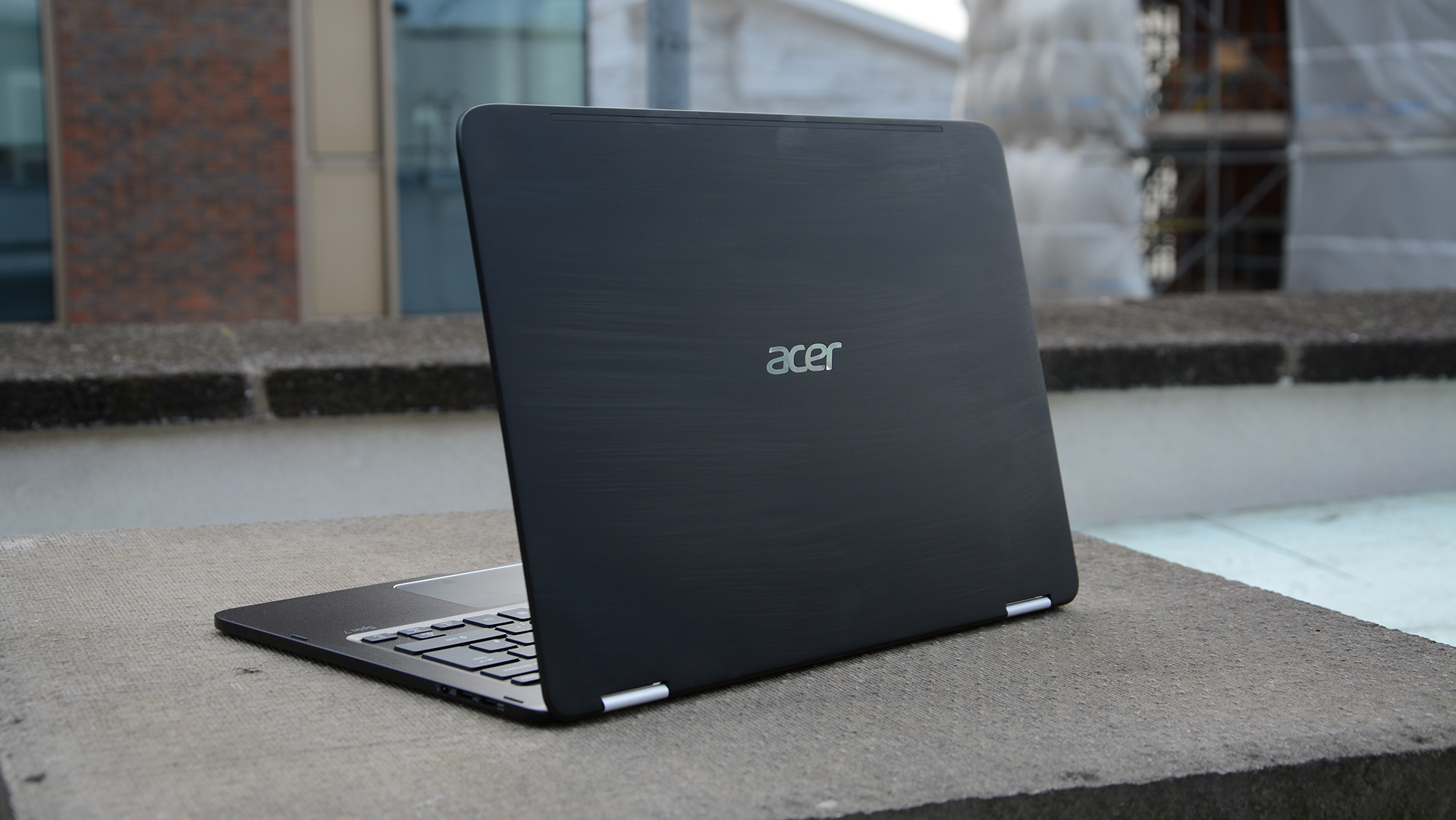
If you're after an ultraportable laptop, the new Dell XPS 13 offers substantially better performance and a much higher build quality for only 50 more, while those who need touchscreen functionality are advised to go for Microsoft's latest Surface Pro, which is better value with a much more attractive screen and hinge.
Verdict
While there’s a lot to like about this device, it’s also dogged with compromise. It’s hampered by poor performance, a high price tag, and questionable design choices - an unfortunate combination that means you’re better off looking elsewhere.
Get the ITPro daily newsletter
Sign up today and you will receive a free copy of our Future Focus 2025 report - the leading guidance on AI, cybersecurity and other IT challenges as per 700+ senior executives
Adam Shepherd has been a technology journalist since 2015, covering everything from cloud storage and security, to smartphones and servers. Over the course of his career, he’s seen the spread of 5G, the growing ubiquity of wireless devices, and the start of the connected revolution. He’s also been to more trade shows and technology conferences than he cares to count.
Adam is an avid follower of the latest hardware innovations, and he is never happier than when tinkering with complex network configurations, or exploring a new Linux distro. He was also previously a co-host on the ITPro Podcast, where he was often found ranting about his love of strange gadgets, his disdain for Windows Mobile, and everything in between.
You can find Adam tweeting about enterprise technology (or more often bad jokes) @AdamShepherUK.
-
 Westcon-Comstor and Vectra AI launch brace of new channel initiatives
Westcon-Comstor and Vectra AI launch brace of new channel initiativesNews Westcon-Comstor and Vectra AI have announced the launch of two new channel growth initiatives focused on the managed security service provider (MSSP) space and AWS Marketplace.
By Daniel Todd Published
-
 Third time lucky? Microsoft finally begins roll-out of controversial Recall feature
Third time lucky? Microsoft finally begins roll-out of controversial Recall featureNews The Windows Recall feature has been plagued by setbacks and backlash from security professionals
By Emma Woollacott Published
-
 The UK government wants quantum technology out of the lab and in the hands of enterprises
The UK government wants quantum technology out of the lab and in the hands of enterprisesNews The UK government has unveiled plans to invest £121 million in quantum computing projects in an effort to drive real-world applications and adoption rates.
By Emma Woollacott Published